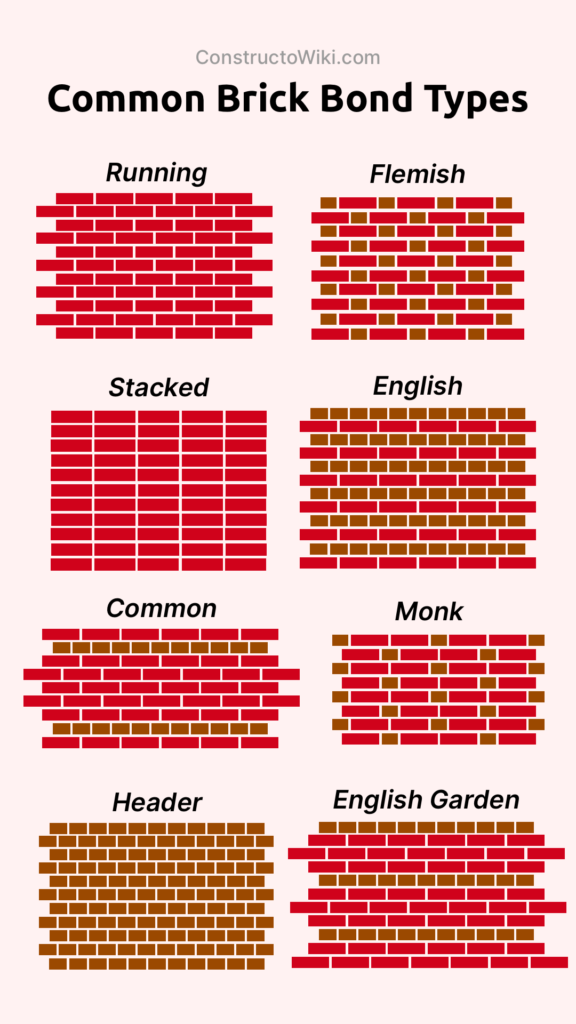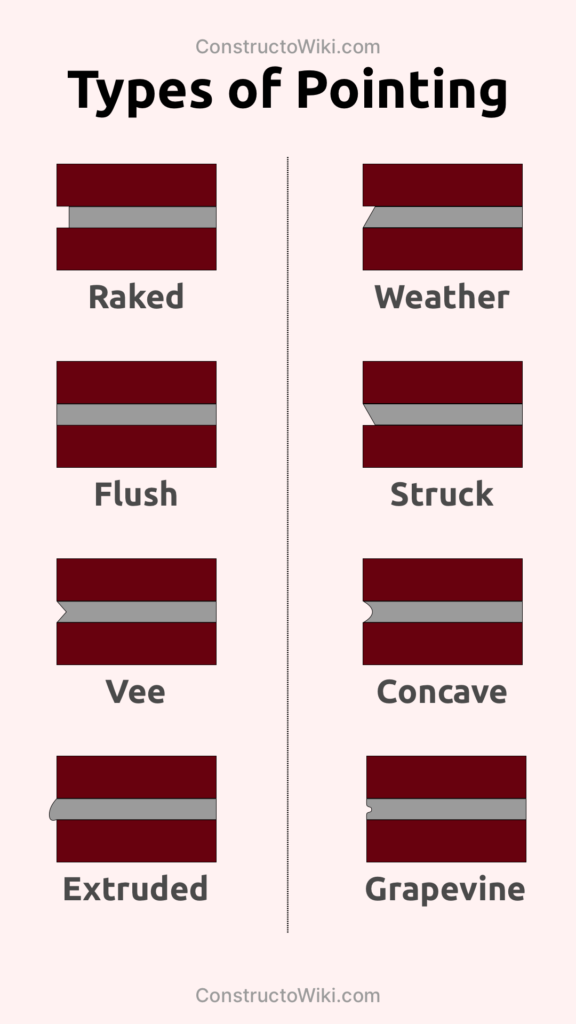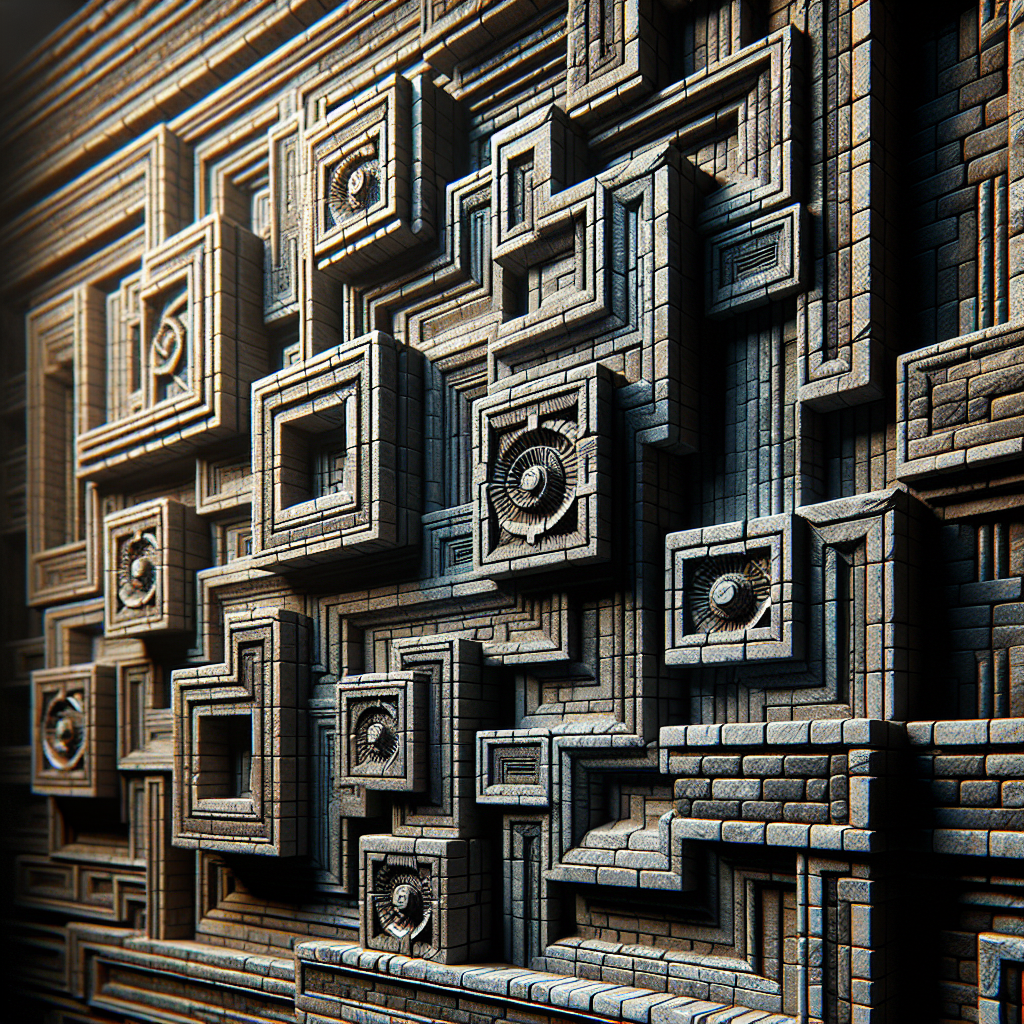Introduction To Terms In Brick Masonry
Did you know that the art of brick masonry dates back over 5,000 years?
Understanding the key terms used in this ancient craft can be quite helpful if you’re planning any construction or renovation project involving bricks.
In this blog post, we’ll walk you through some fundamental terms and concepts in brick masonry.
We’ll start by covering the basics, introducing standard terms like bonds, courses, and more.
Then, we’ll explore different bond types, including running bond and header bond, and highlight their unique characteristics.
We’ll also cover additional brick masonry concepts and discuss the essential factors affecting the durability and maintenance of masonry structures.
By the end, you’ll have a comprehensive understanding of brick masonry terms and their practical implications.
Let’s get started!
Table of Contents
Major Terms Used in Brick Masonry

Brick Masonry Basics
Brick masonry involves constructing walls, pavements, and other structures using individual bricks laid and bound together with mortar. Knowing the key terms can help in understanding how these structures are built and maintained.
Common Terms
Listed below are some common brick masonry terms:
- Bond: The pattern in which bricks are laid to ensure the stability and strength of the structure.
- Course: A horizontal layer of bricks or stones.
- Header: A brick laid with its end facing the wall, showing the shorter face.
- Stretcher: A brick laid with its long side facing the wall.
- Bed: The mortar layer on which a brick is laid.
- Joint: The mortar space between bricks, both vertically and horizontally.
- Course Joint: The horizontal joint between courses.
- Perp: The vertical joint between bricks in the same course.
Types of Bonds in Brick Masonry
Different bond types are used depending on the aesthetics and structural requirements.
- Running Bond: Also known as a stretcher bond, each brick is laid as a stretcher in each course, with vertical joints staggered.
- Header Bond: Bricks are laid with their ends facing the wall. This bond is particularly strong and used in load-bearing walls.
- English Bond: Alternates between courses of headers and stretchers; it’s known for its strength.
- Flemish Bond: Combines headers and stretchers alternately in each course.
Running Bond
| Course | Description |
|---|---|
| 1 | All bricks laid as stretchers |
| 2 | All bricks laid as stretchers with staggered vertical joints |
Header Bond
| Course | Description |
|---|---|
| 1 | All bricks laid as headers |
| 2 | All bricks laid as headers with staggered vertical joints |
For more detailed information, you can check this architectural resource that explains various brick masonry terms in depth.
Additional Brick Masonry Concepts

What is the Process of Filling in Between Bricks Called?
The material used to fill in the spaces between bricks is known as mortar. Mortar is a mixture of water, sand, and a binder such as cement or lime. It serves both structural and aesthetic purposes, as it binds the bricks together, fills gaps, and provides a uniform appearance to the wall or pavement.
The main properties of mortar include:
- Adhesiveness: Mortar must strongly adhere to the bricks to form a stable structure.
- Consistency: The mixture should be consistent to ensure even application and adequate bonding.
- Flexibility: Mortar needs a certain degree of flexibility to accommodate slight movements and prevent cracking.
What is Arise in Brick Masonry?
In brick masonry, the term “arise” refers to the sharp edge formed by the meeting of two surfaces of a brick. Arises are critical in achieving precise and neat brickwork. Smooth and well-defined arises ensure that the bricks fit together tightly, providing better aesthetic appeal and structural integrity.
Arises can be prone to chipping if not handled carefully during transport and installation. Masonry tools are designed to minimize the risk of damaging these edges during construction.
Other Key Terms in Brick Masonry
Here are a few additional terms that are essential in brick masonry:
- Face: The visible surface of a brick wall or the side that faces outward.
- Bat: A fraction of a brick, usually half or quarter, used to complete a course or bond pattern.
- Quoins: The external angle or corner of a building, often marked by bricks or stones of greater size or different color than the adjacent walls.
- Pier: A vertical, freestanding masonry support that can form part of a wall’s construction.
- Plinth: The lower part of a wall, often built with a wider base for added stability.
Durability Factors
Several factors affect the durability and longevity of brick masonry structures:
- Mortar Quality: High-quality mortar that’s properly mixed ensures that the bricks bond well and the joints remain strong.
- Brick Quality: Bricks must be uniformly burned and free from cracks, chips, and other defects.
- Workmanship: Skilled labor is essential for precise laying, cutting, and finishing of masonry work.
- Environmental Conditions: Protection against moisture, temperature changes, and biological growth can extend the life of masonry structures.
Maintenance Tips
Proper maintenance is key to preserving brick masonry structures:
- Regular Inspections: Inspect for cracks, erosion, or damage regularly to address issues early.
- Cleaning: Use appropriate cleaning methods, such as gentle brushing or approved chemical cleaners, to remove stains and biological growth.
- Repointing: Replace deteriorated mortar joints to maintain structural integrity and waterproofing.
- Sealing: Apply sealants to protect against moisture ingress, considering the porosity of the bricks and the environmental conditions.
For more information on how to maintain and repair brick masonry, you can visit this comprehensive guide on repointing and maintaining bricks.
The Role of Arches in Brick Masonry

Understanding Arches in Brick Masonry
In brick masonry, arches are curved structures that span an opening and support loads from above. They efficiently transfer weight and forces down into the piers or columns on either side of the opening. Built with a series of wedges-shaped bricks called voussoirs, arches distribute weight in a way that enhances stability and support in a structure.
Key Components of an Arch
Arches have various components vital for their function and integrity:
- Voussoir: The wedge-shaped bricks that form the curved part of the arch.
- Keystone: The central, topmost voussoir which locks the other voussoirs in place.
- Springer: The lowest voussoir on either side of the arch from which the curve begins.
- Abutment: The end supports that receive the thrust of the arch; these can be walls or piers.
- Intrados: The inner curve or surface of the arch.
- Extrados: The outer curve or surface of the arch.
- Rise: The vertical distance from the springing line to the highest point of the arch.
Types of Arches in Brick Masonry
Arches come in various types, each serving different architectural and structural needs:
- Segmental Arch: A partial circle that provides robust support and distributes weight efficiently.
- Semi-circular Arch: Also known as a Roman arch, it forms a half-circle and is highly effective at bearing loads.
- Pointed Arch: Features a sharp apex, often used in Gothic architecture for its aesthetic appeal and height.
- Flat Arch: Appears almost flat with minimal curvature, suitable for shorter spans.
- Jack Arch: Constructed flat without a true curvature, often used in doorways and windows.
Segmental Arch
| Feature | Description |
|---|---|
| Shape | Part of a circle |
| Major Benefit | Efficient load distribution |
Semi-circular Arch
| Feature | Description |
|---|---|
| Shape | Half circle |
| Major Benefit | Strong load-bearing capacity |
Advantages of Using Arches
Arches offer several significant benefits beyond their structural capabilities:
- Load Distribution: Arches evenly distribute weight, reducing stress on any individual component of the structure.
- Aesthetic Appeal: Arches provide a visually pleasing element that enhances the architectural character of buildings.
- Space Maximization: By spanning wider openings, arches allow for larger spaces and more open designs.
- Durability: Arches constructed with quality materials can last for centuries, showcasing the longevity of good masonry work.
For more detailed information, you can check this architectural resource that explains various brick masonry terms in depth.
Conclusion
Understanding the major terms and concepts in brick masonry is fundamental for both construction professionals and enthusiasts.
Masonry techniques, mortar quality, and proper maintenance ensure stability and durability in masonry structures.
By mastering these terms and practices, you can appreciate the intricacies and craftsmanship involved in brick masonry.
Frequently Asked Questions – FAQs
What are the most common types of brick bonds?
The most common types of brick bonds include Running Bond, Header Bond, English Bond, and Flemish Bond. Each has unique patterns and uses for structural strength and aesthetics.
What is the purpose of mortar in brick masonry?
Mortar acts as the bonding agent between bricks, providing stability and uniform appearance. It also helps fill gaps and secure the bricks in place.
How often should brick masonry be inspected?
Regular inspections should be conducted at least annually to identify and address any cracks, erosion, or damage early, ensuring the masonry’s longevity.
What are arises in brick masonry?
Arises are the sharp edges formed by the meeting of two surfaces of a brick. They are essential for achieving precise and neat brickwork.






